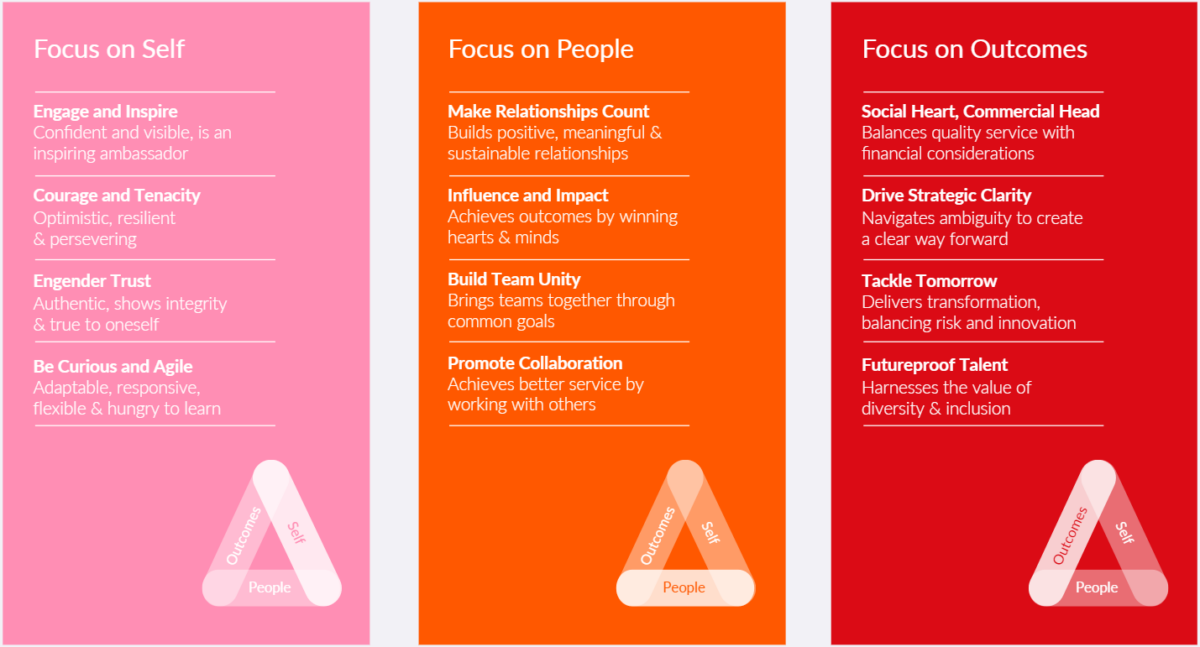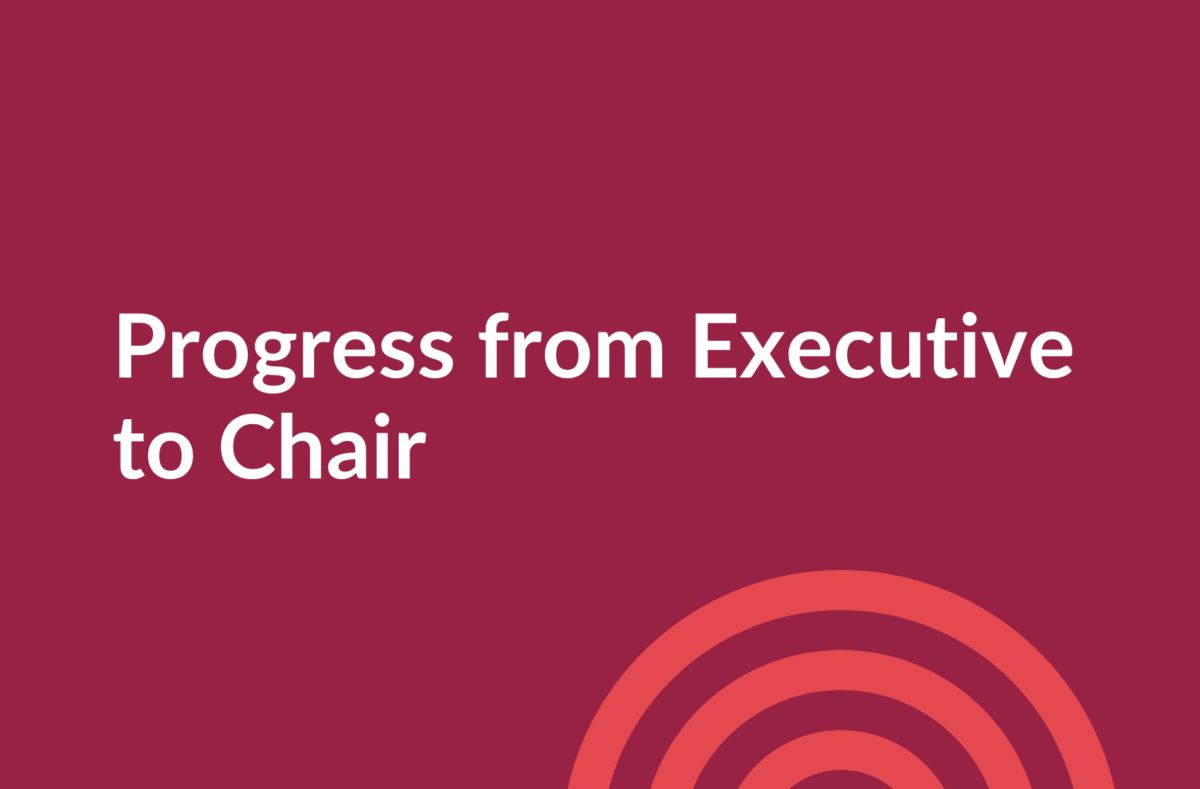What leadership behaviours are most important to progress from Executive to Chair?
It is broadly accepted that effective leadership is somewhat context-dependent. Hershey and Blanchard (1969) coined the phrase ‘situational leadership’ when they introduced a model that described ‘supportive’ vs ‘directive’ behaviours. And, it makes intuitive sense. The traits we look for in our leaders when a crisis arises will generally be different to what is needed to guide longer-term change. But what about different leadership roles within an organisation? Are there typical behavioural differences to look out for, and how do you know if you are bringing a leader into an organisation who has the right set of attributes for the specific role?
The step up to a non-executive, or ultimately a Chair position, brings such a significant change in context that it is reasonable to pause and consider whether the nature of leadership style required to bring success in the role remains the same, or – if not – what specifically is different? And, it is worth remembering that a Non-Executive position is typically a milestone on this career journey, and as such the shift in behavioural emphasis may be incremental too.
Our unique leadership model, Altitude, defines leadership style across 12 core behaviours. It is the only model to use extensive and continuous research from 1000 public sector and not-for-profit leaders to determine and benchmark the attributes that differentiate outstanding leaders in these sectors. Our extensive experience recruiting Chairs has further led us to the creation of a second version of our Altitude model – which describes the specific behaviours needed in Chair roles.

We found that many of the traits that underpin executive leadership in the public and not- for-profit sectors are similar when we compare Executives to Chairs – for example a tenacity to persevere in testing times. However, there is a shift that most Executive’s experience when stepping into a board-level position, and that is the move away from activism – of being the deliverer. Now the degree to which this happens will vary – the sector, organisational context and current incumbent CEO will all influence the role that the Chair must play and therefore, which behaviours are important.
But it is not unusual for Chairs to fall into the trap of stepping too far into the Executive space and those who have strong preferences towards directing others may be at a greater risk of doing so.
“Am I doing enough, am I doing too much?”
So, the question is what are the alternative behaviours that a Chair can emphasise to be truly effective?
1) Chair as critical friend
With a directing role being off limits, instead Chairs we’ve spoken to have related how they can be an effective guide and support to the CEO.
“First priority is supporting the CEO to be the best they can be.”
Some describe their capability for quickly learning new things and assimilating information with their existing knowledge. They do this to offer insight, or even better to frame the question that will encourage others to generate ideas.
“My way of thinking is more of a guidance role, a reflector role… If we don’t know what we’re trying to do, I need to step in and ask why are we doing it?”
Some shift their thinking from ‘how to solve a problem’, towards ‘how to create the discussion’ that will enable the group to collectively examine the problem. They offer their own suggestions with caution and are patient, allowing time for others to contribute.
Yet they are not passive, they recognise when to offer their opinion, constructively challenge, and when decisive action is necessary; at their best they are highly conscious of what role they are playing and why. Some have also expressed a shift in the context within with they strategize, looking to offer a far bigger picture perspective whether that is in terms of timeframe, market positioning or partnership development. One of the critical aspects that a Chair will shape is the formation of the board itself, ensuring that the right skillsets and behaviours are in place. They know the value of the board comes from the diversity of its make-up and are proactive and persevering in creating this.
“You have to know when it’s going wrong and when to intervene.”
2) Chair as Diplomat
Working relationships change at Board level, and an important role a Chair can play is to help unite individuals behind a common goal. A nuanced set of influencing skills underpins this, and the starting point is in creating the space for discussion and different perspectives to be shared, whether that is with board members, staff or external stakeholders.
“Conversations can be challenging. Comfortably uncomfortable.”
When a decision needs to be made, there is a conscious and skilled role that Chairs can play. First, it must be remembered that the nature of teams and relationships at Board level are fundamentally different to that of an Executive leadership team. These individuals may only meet at board meetings, and many Non-Executive Directors will occupy multiple such roles across a range of organisations.
“I know my trustees have divergent views, balance between growth and delivery of objectives. I need to hear all those voices and work out how to take forward.”
As such, the ‘pre-meet’ has never been more important. Chairs we have profiled describe these one-to-one meetings away from the boardroom as a critical opportunity to understand individual viewpoints and use the resulting insights to consciously structure a discussion when inside the Board room.
“It’s dependent on personal chemistry to a degree. Some people who are reflective need more questions – others want you to cut to the chase.”
So, emotional intelligence is finely tuned – the ability to read what is important to people and find creative ways to help them understand each other. Go too far, and there is a risk of such behaviour (whether perceived or actual) being viewed as manipulative – but when accompanied by honesty and transparency, this approach is very effective.
3) Chair as Upholder
A key purpose of any Board is to ensure corporate governance arrangements are in place and uphold standards of performance and conduct in line with organisational priorities.
“(A Chair is) less directive, more an embodiment of what the organisation should stand for.”
Given the public scrutiny and interest that public sector and Not-for-Profit organisations can attract, there is also an added expectation that Chairs are highly principled, ethical, and ultimately ‘do the right thing’.
“The Chair needs to manage governance, risk assurance and integrity.”
This is not to suggest Executive leaders are lacking in integrity, simply that there is increased emphasis in this area for Chairs. Some have described the role as akin to being the conscience of the organisation. Chairs we’ve profiled describe how they have used the organisations values or broader Nolan principles to challenge behaviour and decisions.
“As a chair, I need to bring people back to core values that can be operationalised.”
They also describe moderating their own risk appetite to reflect the organisation and its context. They recognise their role in setting the tone of the organisation through the behaviours they exhibit.
Whilst the context-dependent nature of leadership will still pervade for both Chairs and Executives, we have found it useful to demarcate these behavioural differences when helping our clients understand the strengths and weaknesses of potential candidates applying for a Chair role. Furthermore, given the importance of the Chair/CEO partnership, understanding candidates in the context of the current incumbent can help to outline where each will complement the other and behavioural preferences that could derail the relationship.
While leadership at any level – from the front line to the boardroom – requires a complex set of characteristics, innovations in assessment are an increasingly powerful tool for informing the process whereby leaders are identified and elevated.
Our psychometric profiles can surface where a leader is on their behavioural journey from Executive to Non-Executive leadership, providing added reassurance that organisations are selecting the right person for the job. If you’d like to hear more – please contact Suzie.Fairley@gatenbysanderson.com

